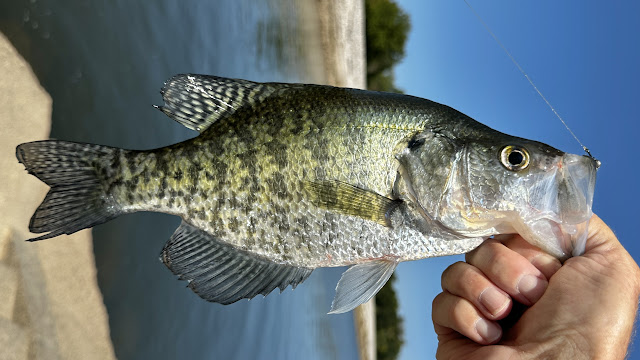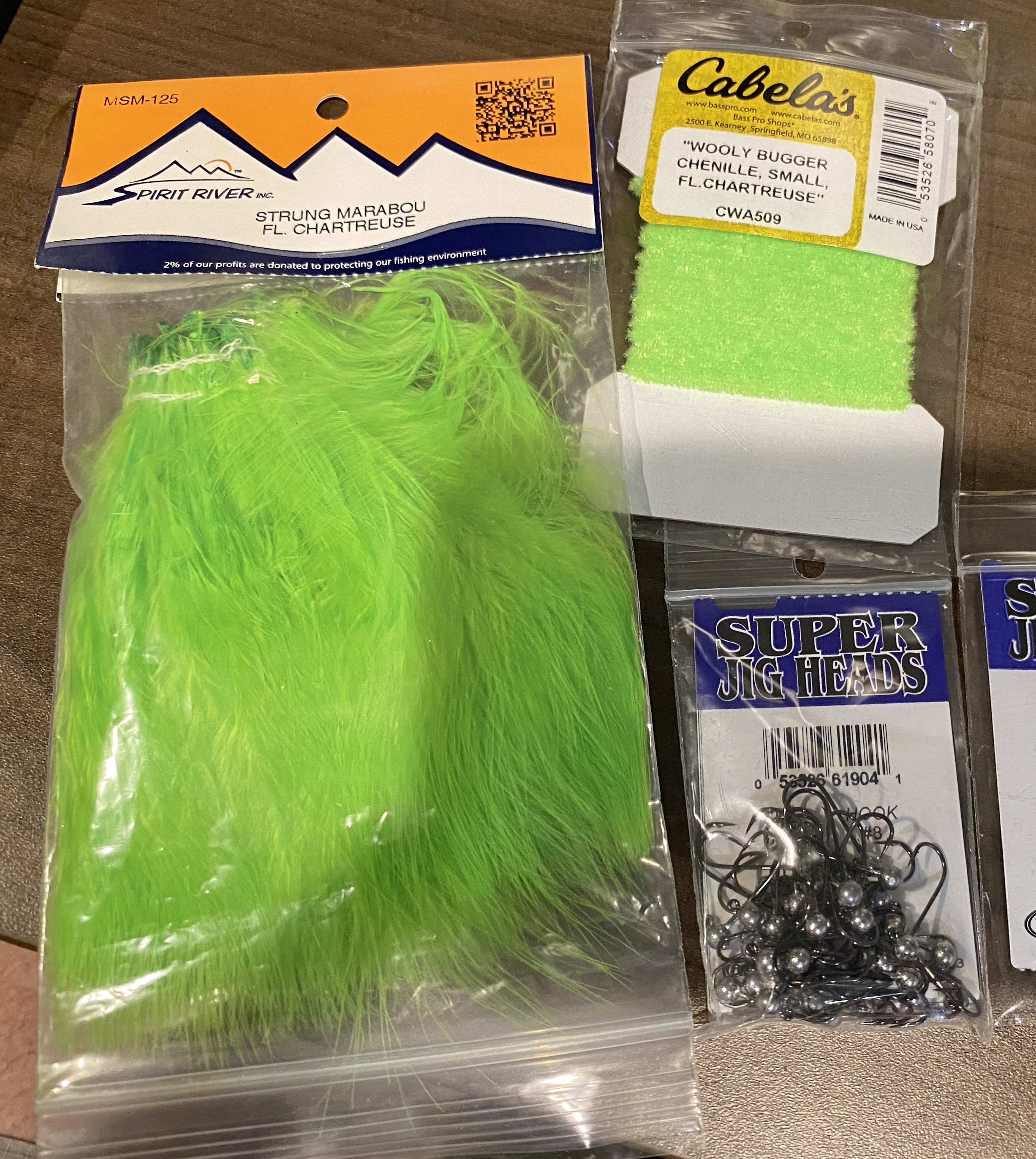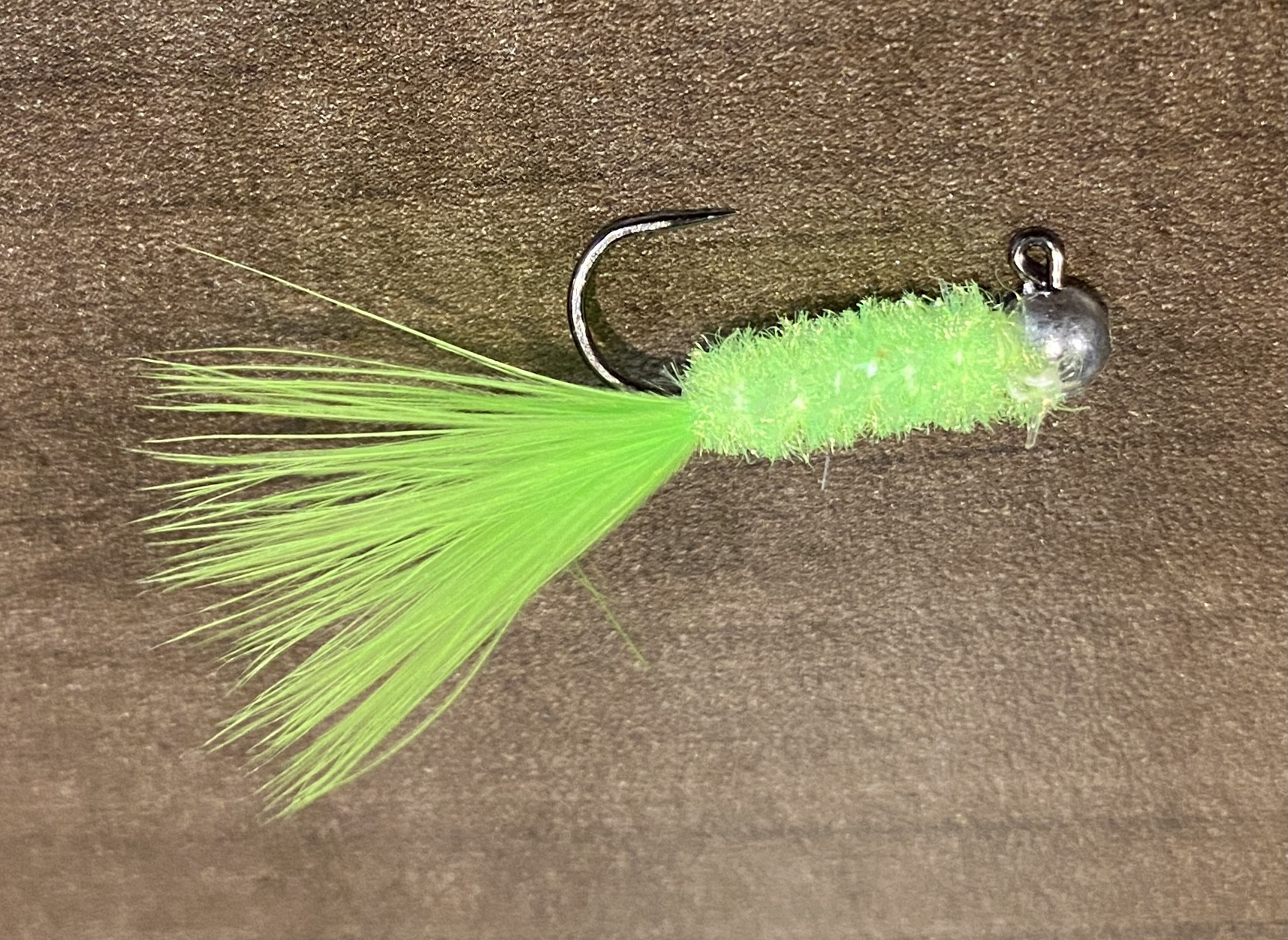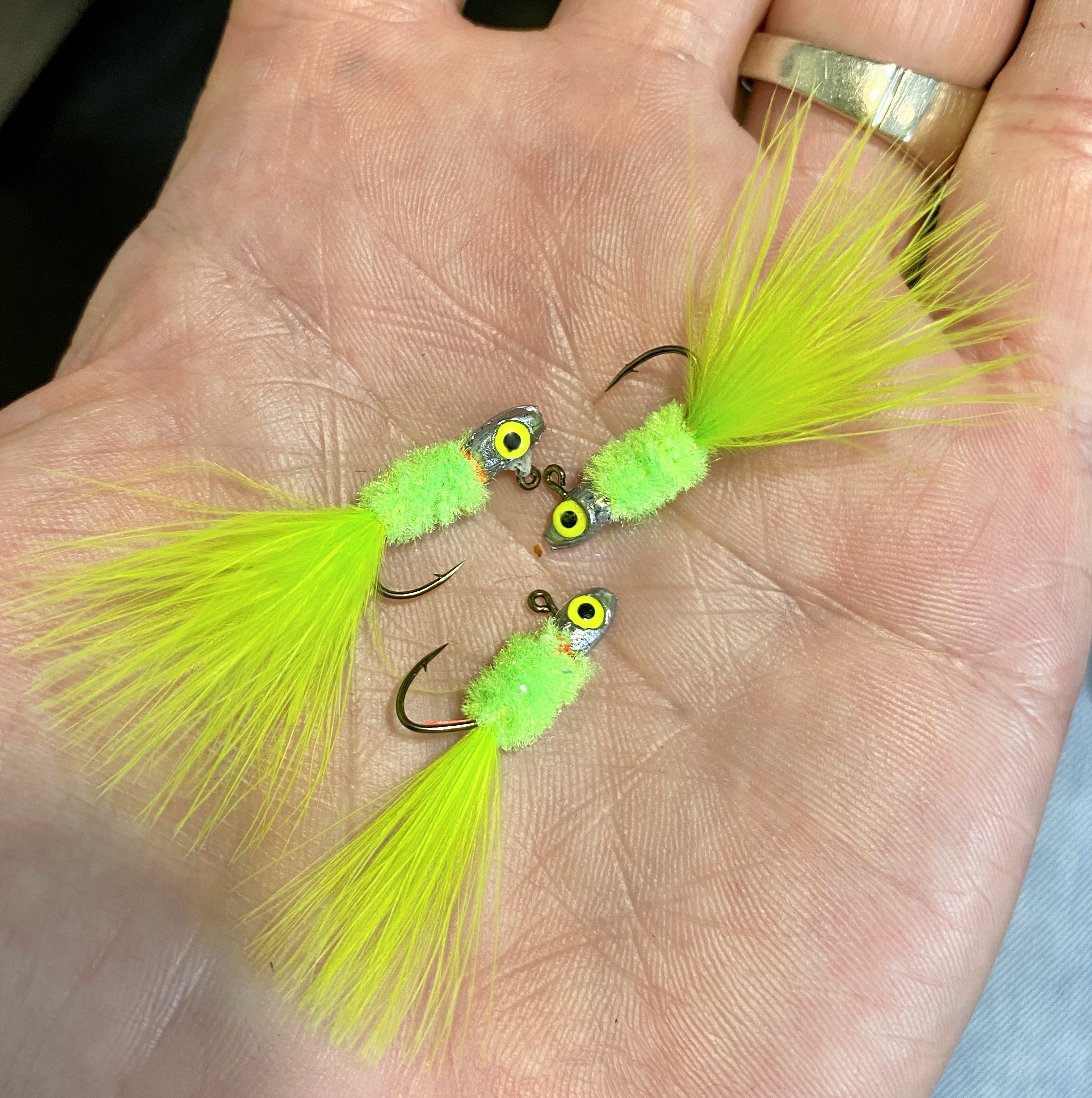***I haven't shared much regarding techniques for quit a while, my recent posts being more about the fish with which I am so enamored. I'm going to start sharing more specifically what I've learned for the various species I've caught.
We all know fish in different waters can behave differently and have different preferences. But I think overall this will give folks who want to try for certain species more info that can hopefully get them started off on the right foot, rather than going blindly. We can all shorten our personal learning curve by first learning from the experience of others.***
This blog post is about Crappie.
 |
| Crappie on Fly |
I've caught Black Crappie and White Crappie from ponds, lakes, and rivers. They behave pretty similarly everywhere I've fished for them. When current is available, they will be near current breaks, in eddies, and near structure (rock, wood, concrete, etc). In lakes and ponds, during the spawn you may find males guarding nests along shoreline drop-offs, near structure, amongst weedbeds, etc. The rest of the season, they may be relating to structures like submerged trees & brush, or they may be suspended in open water away from shore. They often move higher in the water column and closer to shore at night. During daytime, if shade is available with suitable water depth, certainly give that area a try.
You can cast and retrieve flies, like Crappie Candy and both beadhead and unweighted Woolly Buggers. If fish are close to shore and shallow, any super-slow sinking unweighted or suspending fly may get bit. I've even caught them on floating patterns like you might use for bluegills (foam poppers and beetles, for example, or large parachute dry flies).
But BY FAR the best technique I've learned (from friend Dale Sanders in Ankeny, Iowa) for catching crappies with flyfishing gear almost any time and anywhere, is to use a microjig under an indicator (tiny bobber). This allows you to put an appropriate-sized fly at almost any depth (based on tippet length under the strike indicator), and keep it in front of crappie until they decide to strike. Its exactly what crappie want MOST of the time.
I use a 9' long 6 wt fly rod. You can certainly go with a much lighter rod... like 3wt to 5 wt. The only reason I use a 6 wt is because I'm usually fishing in areas where there may be larger bass present, or catfish, etc....and I want to have a good chance to land them if they strike. For that same reason I prefer to use 6 lb or 8 lb test Fluorocarbon tippet, even though you can certainly catch them on 2lb or 4lb test tippet.
I like the Fish Pimp Original size football-style strike indicators. I usually begin setting it at about 20" above the microjig, and then adjust from there based on water depth or where the fish may be located. In summertime, fish may be 5' deep or more, based on thermocline depth in the body of water.
I like to tie my own patterns on Wapsi Super Jig Heads. They have stronger hooks than most other commercially available microjigs. I think 1/64th oz, 1/48th oz, or 1/32th oz with the #8 or #6 hook is about perfect for Crappie. I've tried different body materials and colors. Almost anything will work, with marabou tail and some sort of chenille body being standards. Chartreuse has by far been my best color in most locations. I've had certain places where olive mylar chenille body has been the best producer, and others where silver metallic chenille body has been excellent.
Here's a few more pics of crappies caught on flies:












No comments:
Post a Comment